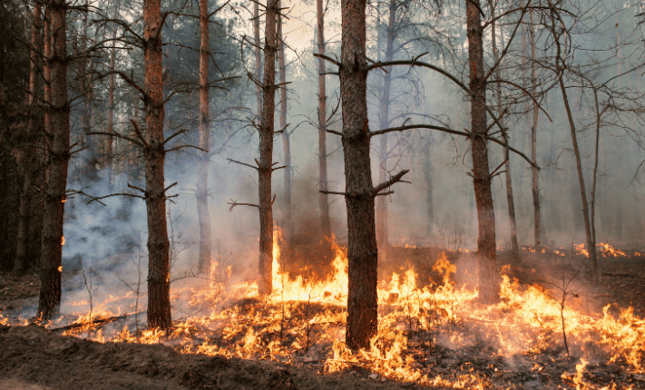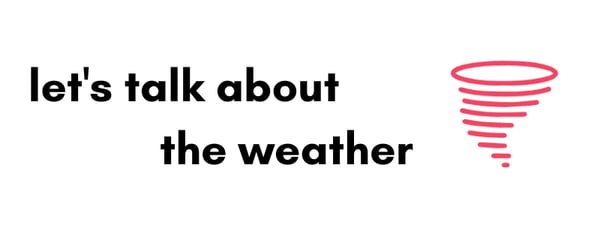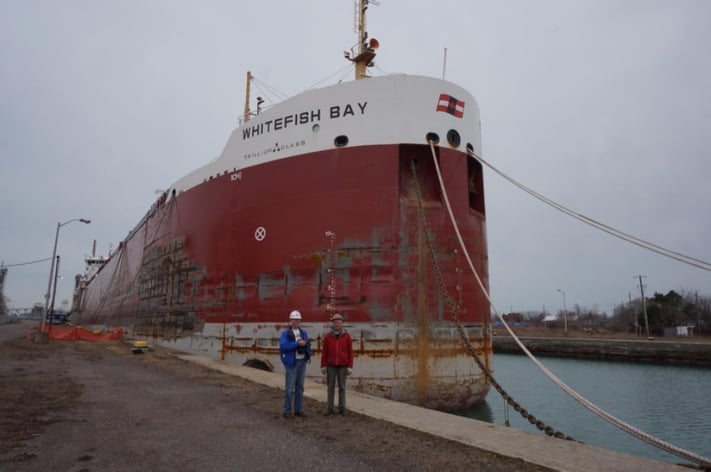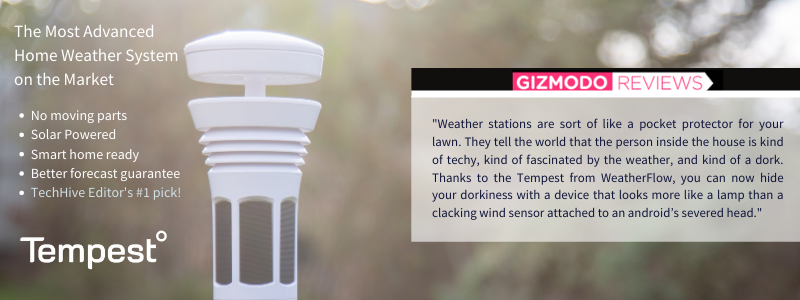Posted by Weatherflow ● September, 2020
Tempest News | September 2020

WORST FIRE SEASON ON RECORD FOR WEST COAST
“If we could bar people from going into the forests and starting fires, that would help. If we could stop climate change, that would help. Better forest management would help,” he said. “But right now, it combined into the perfect storm.” Read more >>>
THE SUBVERSIVE GARDENER
The Subversive Gardener is a non-profit platform dedicated to developing creative design solutions to agricultural challenges created by climate change. This guerrilla gardening movement recently announced their new video series,highlighting creative problem solvers transforming neglected community spaces into thriving communal areas. Read More >>>
PROTECTING OUR POLLINATORS
Two-thirds of UK butterfly species are in decline due to habitat loss and fragmentation, with monotonous landscapes removing many of the microclimates butterflies need to survive. Insects, including butterflies, pollinate around 85% of our food crops. So how do we slow their decline? Read more >>>

…..with Professor Peter Blanken, a leading expert in biometeorology and climatology
At the University of Colorado Boulder, Blanken's overall research objective is to better understand the effects of atmospheric conditions on living organisms and water and carbon cycles. Tempest caught up with him between teaching remote classes to talk about the weather and learn more about why gathering data about microclimates is increasingly essential to scientists, researchers, and just about everyone else.
[Dr. Blanken installs intrumentation on a Canada Steamship Lines vessel for research on Great Lakes evaporation.]
Q:Peter, it's great to talk to you. What are you teaching this semester?
A:I'm teaching a class in biometeorology. We look at interactions between weather, radiation, temperature, humidity, wind speed, air quality, and how they affect people and plants within a microclimate. This week we are calculating the ways that incoming solar radiation affects metabolism. Not just for humans, but in vegetation. We study how plants can adjust the concentration of sugars and starches in their cells as the first defense against low temperatures.
Q: Is that why studying microclimates is so important? The effect of hyperlocal weather on humans and plants?
A:It's important to study microclimates for many reasons. As a person living in these changing environments, microclimates have a biological effect on your body. Air temperature, air quality, and radiation all impact human well-being and health. Humans are endotherms, meaning we can regulate our body temperatures and produce heat within our bodies. 97% of species on the planet are ectotherms (eg.insects and fish), meaning they are temperature conformers. These organisms are utterly dependent on ambient temperatures and can't change their metabolism to combat temperature fluctuations. Regarding microclimates, changing weather conditions, even in tiny spaces, have huge biological implications.
Q:How is it that the weather can vary so dramatically from one point to another nearby?
A:The heating of the atmosphere is a function of the earth's surface. Variations in microclimate are a result of vegetation cover, slope, aspect direction, slope facing, amount of solar radiation reflected - all that determines temperature at the surface. Variations will depend on land cover and land use. What does the mosaic of the terrestrial surface look like? Urban landscapes with roads, parking lots, a patch of grass - these differences and the patchiness of the different rooftops, roads, parking lots will increase your microclimate habitats. This is the primary determinant of how the atmosphere is heating up. Variations in microclimate have a profound influence on the behavior of the atmosphere.
And it's not always a bad thing. We do see that type of structure here in Boulder. Above the treeline in alpine areas, we have huge variations in microclimates. There are naturally different landscapes — rock, snow, boulders. A whole microclimate can develop where snow is trapped, while the other side, exposed to the sun, might be hot and dry. So microclimates may be man-made or occur naturally.
Q:Are there more microclimates now than in the past?
A:In general, variability in weather has increased. We know that from our longterm observations. We see more increased variability as temperatures increase. That makes sense physically since temperature is a measure of kinetic energy; the more energy in the system, the more has to dissipate somewhere. With more variability, we are getting more storms, because storms are transporters of energy. Weather is getting more extreme. Precipitation events are increasingly intense — more precipitation in a shorter amount of time. And at the same time, we have more dry days between those events. That's a big part of climate change; changes in averages, and the variability of those averages.
Q:Do you ever use local weather stations in your research on microclimates?
A:I'm looking at a weather station right now since my lab is now my backyard! I'm doing a study looking at evaporation from a reservoir and seeing how that is changing over time. We are looking at evaporation rates but will also measure meteorological conditions at the exact location.
Q:Do you believe that hyperlocal weather stations make the forecast better overall?
A:Data is always useful if it's high quality. I'm a measurement person. I'm all for getting more data, but some products out there are just not acceptable in terms of accuracy and resolution. However, if the data is accurate, the instrument is well-calibrated, appropriately designed, and put in the right location, then yes. If not, no.
Many areas in world are still data-sparse - we didn't have any Tempests in the past. We have massive areas on earth with no data, even with remote sensing. You can't get the spatial resolution to see these surfaces, so over the last 20 years or so, people have been relying on alternative data sources. I can see that starting to change now, with the advancements in weather system technology.
Q:Do you think more people should have weather stations at their homes? Will it help people?
A:You know, to the industry's credit, it's pretty impressive what you can get now in terms of home weather stations. They're becoming more accurate, and some are more compact than others, with even more advanced, solar-powered, research-grade instruments, like the Tempest Weather System.
I think awareness is the key. If you were to get your own weather station and put it in your backyard, you automatically become more aware of what's going on. They make you more curious about what's happening if your backyard, compared to a mile away or an hour away. I check mine every day.
Interview by Ann Marie Gardner. Find her on Instagram @thenewweather
Back to: Newsletter

